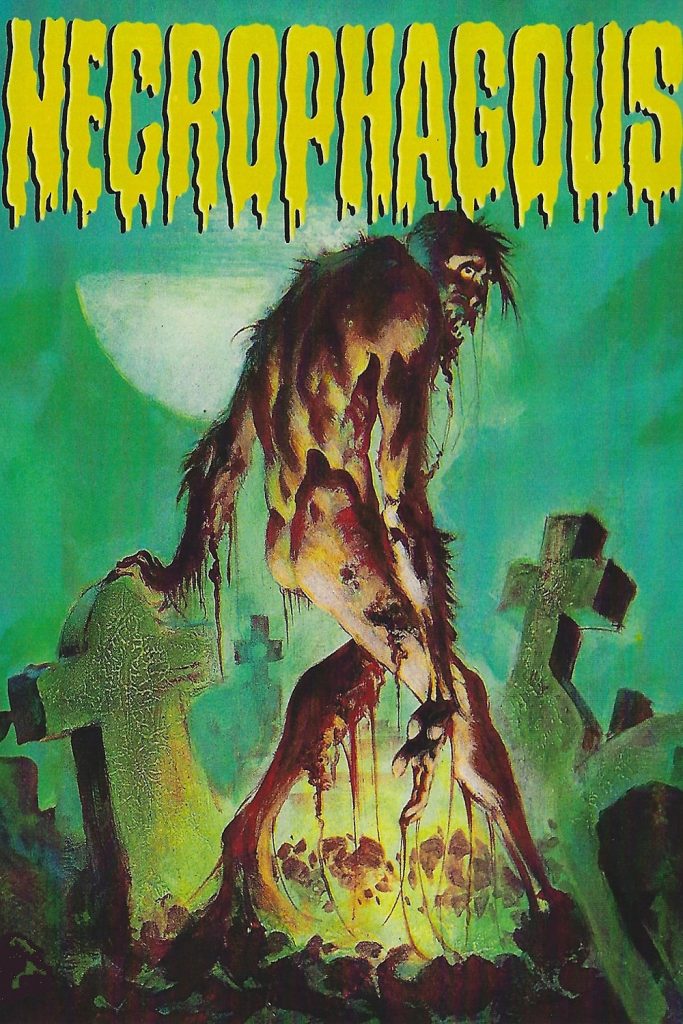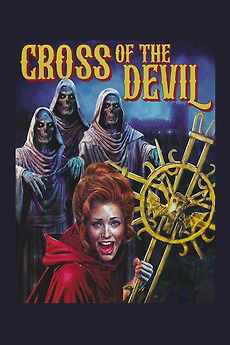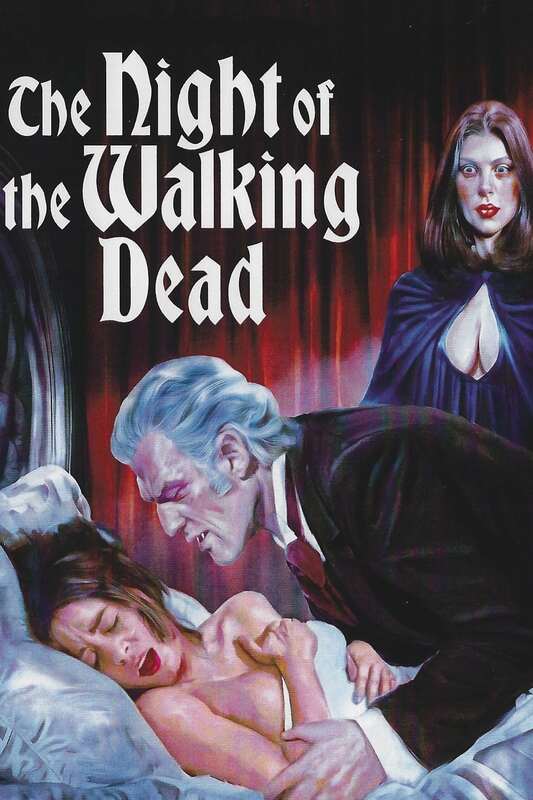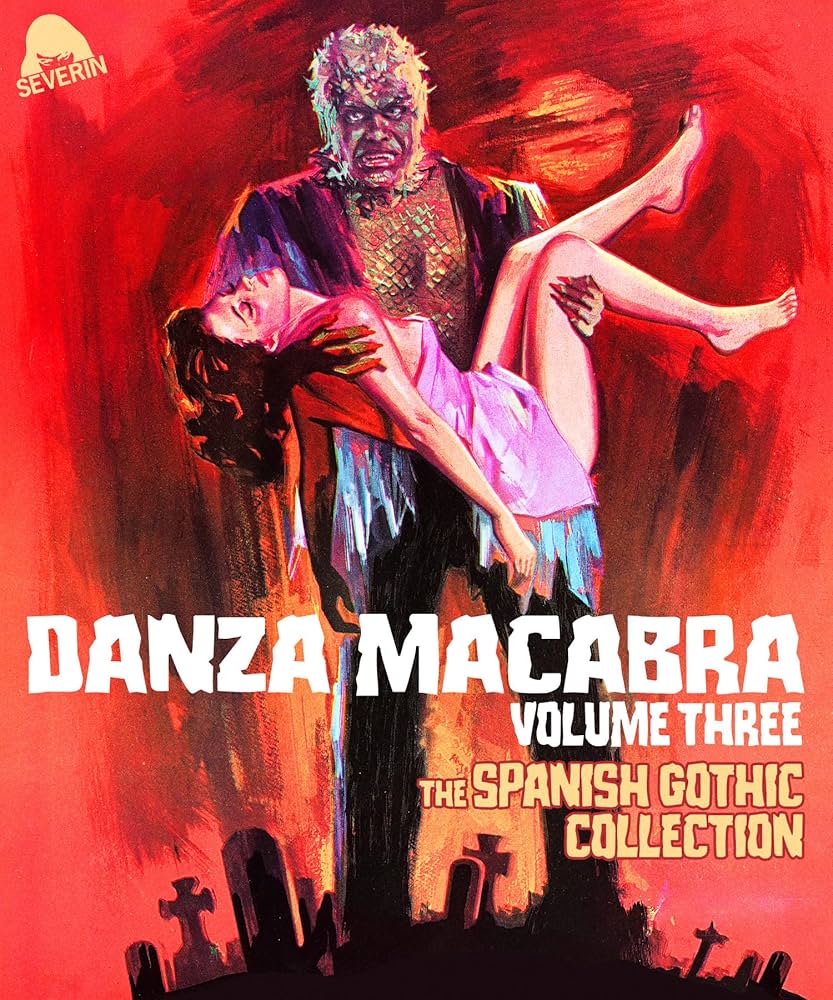Severin has unleashed another box set of tasty Spanish gothic morsels to devour! How does each film stack up though? Let’s dig in to find out!

In Necrophagous, Michael Sherrington has been away on business but returns to his ancestral home to discover that his wife died during childbirth and his child was stillborn. While this was naturally upsetting, even more agonizing is that every one he speaks to seems to behave actively hostile toward him and refuses to discuss his wife. He isn’t even allowed to see her body before her interment. As a result, he heads to the cemetery and digs up her grave himself only to find it empty. This sets Michael on a downward spiral into a bizarre conspiracy involving witches, mad scientists, lizard men and other lurid supernatural happenings.
In a quote from Angel Sala, director of the Sitges Film Festival, he says of Necrophagous that “if there is any Spanish horror film that is unlike anything else, and causes a huge divide in opinion, even today, it’s Necrophagous.” Part of this controversy no doubt originates from this film receiving the Best Director award at the 1971 Sitges Film Festival, which in an unusual move was shared with Janusz Majewski, director of Lokis: A Manuscript of Professor Wittembach, whom many at the time felt was the technically superior director. Seeing the films side-by-side, it’s hard to argue that sentiment. But having said that, while Necrophagous is a bit of a ramshackle, disjointed film, the director Miguel Madrid (who directed the incredibly atmospheric and fascinating Killer of Dolls) certainly has a distinct vision in realizing such a weird, hallucinatory film.
The transfer here, taken from a 2K scan of the original recently discovered negative, is quite good. While the film has a fairly muddy color palette, the video quality rarely wavers with healthy grain and consistent color saturation. It does have a few scratches and debris from the age of the source materials, but overall, it looks MUCH better than the crummy budget transfers I’ve come across for this film previously. The film has both an English and Spanish mono audio track and they come across very clean with little to no distortion. On more of a personal comment, I’d strongly suggest watching it in Spanish. The English dub is pretty terrible. The disc has several really nice extras as well including an audio commentary from Andy Marshall-Roberts of The Nasty Pasty podcast, an interview with Angel Sala, head programmer of the Sitges Film Festival on the history of the film and why he believes it was selected as best director in 1971, and an interview with Maria Pilar Rafales, daughter of Sitges Film Festival founder Antonio Rafales, on her reflections on the history of the festival itself.

Cake of Blood (a title which seems to mean absolutely nothing in relation to the film itself) is a horror anthology comprised of four segments, each by a separate director who collaborated to create transgressive cinema under the Franco regime in Spain and with each segment taking place in a different time period. The first segment “Tarot” is set in the Middle Ages and features a knight beset by all manner of hallucinatory deviltry. The second segment “Victor Frankenstein” is a rather unconventional, decadent retelling of the Frankenstein story. The third segment “Terror Among the Christians” subverts the Christian resurrection origin with a story of ravenous vampires in Roman times. The fourth segment “The Dance” is the only more-or-less modern day story and tells the story of a distinctly unusual home invasion.
Thematically these four segments aren’t terribly similar. They do have a consistency in how they attempt to rise above mere unseemly horror tales to create something more akin to an art film. “Tarot” feels the most overtly “artistic” with a strange, nearly incoherent narrative that comes across more pretentious and metaphorical than actually engaging or interesting. It isn’t terrible but is a bit of an odd way to begin the anthology, like casting the audience adrift without a rudder. “Victor Frankenstein” on the other hand does offer a more traditional narrative and is shot in a more conventional way. While I found the character interactions fairly interesting at times, particularly the interpretation of the “monster”, the way it’s filmed is honestly a little flat and lethargic. Things pick up considerably with “Terror Among the Christians”. While it is also visually somewhat dreamlike similar to “Tarot”, there is a more concrete narrative and a distinct lack of pretentiousness with the director not afraid to get crazy. “The Dance” is a nice one to end on with its creeping dread, surreal minimalist sets and clever twist ending. Overall, while the film starts a bit weakly, it does get progressively better as it goes.
The video quality of Cake of Blood is better than expected with really nice color saturation at times, particularly in the fourth segment. It also has healthy grain levels despite the hazy cinematography of a couple of the sections. Overall, very nicely done. The audio is the original Spanish mono track and comes across nice and clear with no noticeable hissing or pops. Like with the other films in this set, we have a healthy and informative selection of extras including an audio commentary with Rod Barnett of NaschyCast and Dr. Adrian Smith, co-author of Norman J. Warren: Gentleman of Terror as well as interviews with actress Marisa Paredes, co-director James Chavarri, actor Jose Lifante and head of Sitges Film Festival programming Angel Sala.

In Cross of the Devil, a British novelist named Alfred boards a train to visit his sister in Spain, worried about her in some indiscernible way after having nightmarish dreams of her being assaulted by the Nights Templar. When he arrives in Spain, he finds out that she has been murdered and vows to discover who did the deed. When his investigation leads to a mysterious occult order called The Devil’s Cross, he realizes he may not be equipped to deal with the demonic ghosts of Knights Templar past.
The story behind the making of this film seems to be discussed as much as the film itself these days. Inspired by Tombs of the Blind Dead, Paul Naschy writes the screenplay to Cross of the Devil basing it on elements from three stories of celebrated Spanish author and poet Gustavo Adolfo Bécquer (“El monte de las ánimas”, “El Miserere” and “La cruz del diablo”). Naschy also happens to be friends with British director John Gilling (most well-known for his work with Hammer Films such as The Plague of the Zombies and The Reptile) who happens to be retired and living in Spain. Gilling finds the material interesting and proceeds to adapt the script into a film without Naschy’s involvement, modifying it in several key ways to make it appeal to a more international audience. This naturally greatly upset Naschy who felt this to be one of his most promising scripts, and he never forgave Gilling the slight. One can only wonder what Naschy’s version of the film would’ve been like (Naschy’s Inquisition may give some hint as to the tone the film might’ve carried). As to the film itself, the tone is a curious one that truly does seem to blend elements of Spanish and British gothic horror together, not always in the best ways. For one, the film is very talky with a relatively lethargic pacing in the first two acts. Despite this, Alfred’s investigation does have some rather eerie and interesting moments, particularly in the hallucinatory dream sequences. For those waiting on the horror elements to really come to the fore, the film doesn’t really deliver until the third act where the Blind Dead-esque Knights Templar finally show up. Gilling also makes the curious choice to shoot the film in an extreme soft focus more akin to television melodrama. In some ways this enhances the hazy dream logic of the film at times but it also serves to make the film look cheap also. This is a shame since the actual camerawork is quite good with some rather striking shots. While Cross of the Devil is perhaps the weakest film in this set, it’s still an interesting curio for Naschy and Hammer completists and to observe how much a director can control a film’s vision.
The video quality of this film is a bit difficult to judge objectively. As already mentioned, the film has an intentionally soft look which seems to be fairly heavy with grain as a result. I do think the colors are balanced well and the transfer looks as well as can be expected given the source cinematography. The Spanish mono audio track sounds nice and clear with no distortion though and represents the film well. On the extras front, Severin has once again loaded up this thing with a great audio commentary by author and film historian Kim Newman and author/film expert Barry Forshaw, interviews with screenwriter Juan Jose Porto and Sitges head of programming Angel Sala, and a really interesting video essay on Gustavo Adolfo Bécquer by Xavier Aldana Reyes.

In Strange Love of the Vampires a.k.a. Night of the Walking Dead, sickly Catherine (played by the hauntingly beautiful Emma Cohen) has been left alone at home after her parents go out town in the wake of the death of Catherine’s sister, who died mysteriously due to some sort of anemia like several other girls of the village. Catherine then crosses paths with the strange and alluring Count Rudolph (Carlos Ballesteros), leader of a group of debauched vampires who have risen from their graves. As they begin to fall in love, the Count lures her deeper and deeper into his decadent world.
Frequent collaborator of Paul Naschy León Klimovsky directed this doomed romance rather beautifully. The costuming, sets and cinematography are all lush and flowing, capturing the atmospheric tone of blossoming love that is dying before it is even fully formed very well. Klimovsky also gets to show off his more eerie, horror-oriented side we saw regularly in his collaborations with Naschy in a sequence where the vampires rise from their tombs. Don’t be fooled by this one sequence though. This is most assuredly a romance mood piece first and horror second. The most incongruous element of the film is perhaps the soundtrack. From the frenzied blast of the psychedelic title sequence to the strange fuzzed guitar noodlings pervading the edges of the film throughout, it’s a curious choice that somehow still works despite sounding as if it would be more at home in a Jess Franco film than here. Strange Love of the Vampires (as I prefer to call it since this title is much more fitting) is an absolutely lovely gothic film that will leave a lasting impression for those with the patience to stick with it.
The video quality for this film is perhaps the most variable of the four. Newly scanned in 2K from the original negative, the film looks appropriately saturated much of the time but the black levels feel a little shallow and there are a few instances of damage to the source that couldn’t be repaired. Granted, this is a very dark film at times, so it can be difficult to make out the details of some of the day-for-night scenes anyway. The grain level does look nicely balanced though. For audio tracks, Severin has provided both the original Spanish and the English dub, both in stereo. As mentioned with other films, the Spanish track is definitely the way to go as the English dub tends to be stilted and poorly synced at times. Also like the previous discs, Severin has absolutely packed this movie with extras. To start with, we have an excellent audio commentary from author/director/film historian Kat Ellinger that is just wall-to-wall useful information about the film and the history of the Spanish gothic. Definitely recommended. We also have another appreciation by Sitges head of programming Angel Sala as well as interviews with writer Juan Jose Porto and actor Jose Lifante, and another well-done video essay on Spanish vampire films by Xavier Aldana Reyes, plus an alternate credit sequence.
The gothic horror film holds a special allure for me. Creeping through cobwebbed corridors of crumbling castles, stalked by unseen terrors lurking in the darkened corners and in ominous torture dungeons, drenched in gloom and atmosphere but with a touch of romantic fatalism and haunted mystery, I absolutely delight in immersing myself in this world. With Severin’s third Danza Macabra Spanish Gothic set, they have done it yet again. They have brought me there and beyond, and I absolutely love it. Now if you will excuse me, I hear a raspy voice beckoning me to a tapestried chamber cloaked in Stygian darkness.

